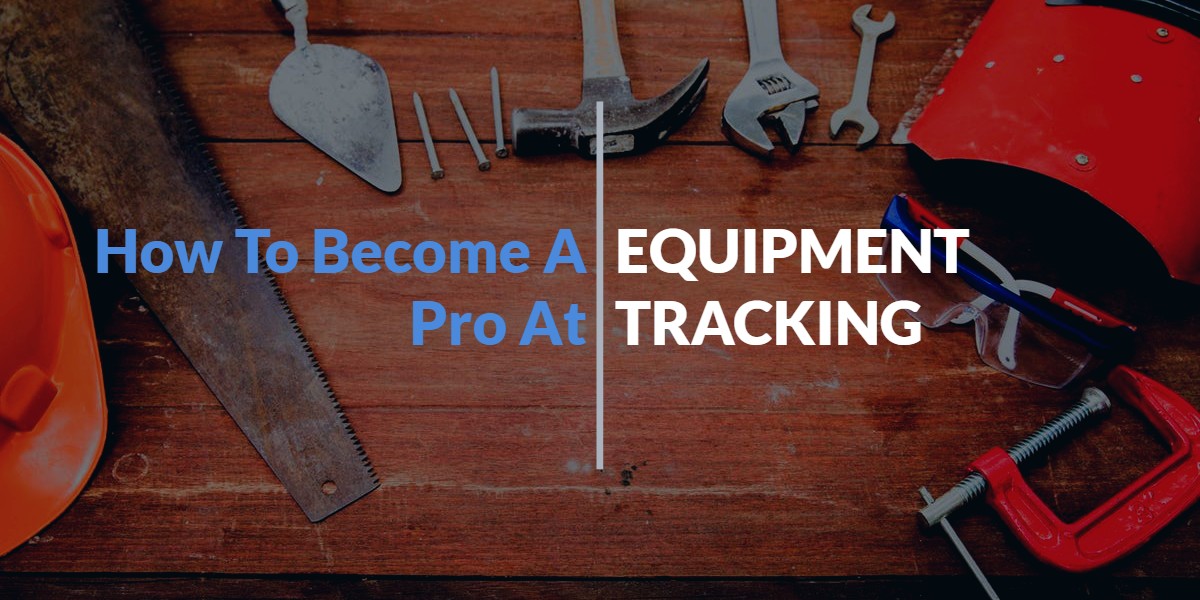Equipment is critical to daily completion of tasks in any business. Be it the construction sector or the entertainment industry, companies have a multitude of assets. These could range from low-value items for everyday use to capital-intensive machinery. However, you can’t just let all this stuff go haywire.
To optimize performance and raise productivity levels of your equipment, it is important to devise some well-grounded management strategies.
One of the best ways to keep your equipment up and running is to track its performance across its lifespan. This allows you to keep tabs on changing work requirements and tweak your equipment accordingly to increase productivity. Before we jump onto the best practices, we need to know and overcome a few common hurdles that crop up when it comes to equipment tracking.
-
Inaccurate database
Maintaining your equipment requires knowledge of essential information about it. For instance, you need to know the operating life of machinery or how often it needs to be serviced. When it comes to the entry of such data, manual procedures are often fraught with human errors and result in duplication of information. Such small-scale mistakes can eventually lead to faulty decision making in the long run.
You can avoid this duplication by resorting to an automated program that lets you enter information via distinct Barcodes and QR codes. It improves the accuracy of data at hand and helps you make well-informed decisions.
-
Poor collaboration

Inter-departmental communication is key when it comes to running seamless work operations. The absence of a centralized database may lead to collaboration gaps, causing your business to slog through. For instance, if the administration plans on changing its vendor but does not inform the procurement manager about it, the latter would place the order to the wrong vendor.
You can fill these communication gaps by devising a forum that instantly conveys updates to members from all departments. A coherent communication system ensures that all the employees in your company are on the same page and keeps them unified.
-
Regulatory compliance
Many industries are subject to stringent regulatory policies when it comes to keeping and maintaining work equipment or inventory. This often forces organizations to conduct regular audits on their equipment to comply with industry standards. An example of this is the medical sector. Regulatory authorities mandate storage levels of certain narcotic drugs to be under a fixed threshold so that there’s no misuse.
You can adhere to such guidelines by installing an automated system that tracks your inventory level and alerts you when it reaches above or below a certain threshold.
Key steps for implementing fool-proof equipment tracking
From a wide range of options to choose from, automated solutions are a popular choice for all market sectors. Designed with customized features, such programs take into account specialized business requirements. You can boost the operational efficacy of your equipment by following these simple steps:
Step 1: Record bin locations
Organizations often acquire new equipment on a project basis. These tools have to be shipped out to work sites. But how do you make sure that your shipment reaches safely while minimizing the risk of theft and misplacement?
One way to do this is to opt for a labeling system which records relevant asset information. By using scanners, you can easily clock in all the equipment data into your system before it gets dispatched to a job site.
In addition to this, an automated system lets you track the location of goods every time they get checked into the system. This comes in extremely handy for construction companies where crew members take along items in bulk to different locations.
Employees only need to enter the GPS coordinates when equipment reaches a certain project site. You can cross-check the physical quantity at a location with the quantity checked into the system to make sure all of it has reached the site. Location tracking of equipment helps prevent any theft or misplacement and keeps a strict check on your employees too.
Step 2: Automate procurement

Planning stock replenishment can be a complicated procedure if you don’t follow the correct technique. Excess equipment can take up a lot of storage space and tie up capital resources that can be used elsewhere. On the other hand, low stock reserves can actually slow down work tasks and delay projects.
By opting for an online inventory management module, you can plan ahead of your procurement needs. All you need to is follow these simple steps:
- Carry out an internal need-based analysis
- Assess the market for potential vendors
- Develop an outsourcing strategy
- Negotiate with vendors on purchase deals
After you furnish your procurement policy, you can streamline this whole process by setting stock thresholds. Most inventory modules send automatic alerts to generate purchase orders when your inventory reaches minimal levels. This way, you can signal vendors for shipping out new stock to you before you actually run out of existing stock.
Step 3: Organize regular audits
Audits can be both external and internal. External audits are normally carried out by third parties to determine the reporting efficiency and accountability of a business. Internal audits, on the other hand, are carried out by people inside the organization.
Generally, companies carry out three different types of internal audits on their equipment to meet industry standards.
- Product Audit: Assessment of the final product/service against its intended purpose.
- Process Audit: Examination of work activities and behaviors that are conducted to carry out a task.
- System Audit: Evaluation of the information systems within an organization to see if the information is disseminated accurately and timely.
Despite focusing on different aspects, these audits done regularly add great value to the credibility of a business. However, you need to consider a few principle factors while organizing compliance audits. Make sure all the data about the functionality of equipment is readily accessible for use by external auditors or regulatory bodies.
Having a password protected information system dramatically helps in this regard. By restricting access to asset information, you can keep sensitive statistics visible to only relevant stakeholders. Tracking check-ins and checkouts of equipment also ensures that it is issued to and used by only the designated team members.
Step 4: Implement depreciation management
Equipment that is expected to last five or more years falls under the category of fixed assets. The long-term nature of fixed assets requires record-keeping of depreciation data. This is where life cycle management of equipment can really have your back.
Documenting instances of wear and tear and scheduling maintenance services after regular inspection greatly reduce the risk of unexpected breakdowns. Implementing a neat depreciation management system increases the useful life of your equipment.
Depreciation data also helps in the timely disposal of assets. Often times, companies sell old equipment for salvage value rather than letting it die out in their warehouses. Tracking the useful life of your equipment prevents losses from tied up capital and helps maximize returns.
Step 5: Check in for scheduled maintenance

Around 13% of equipment failures are caused by a lack of proper maintenance. You need to conduct frequent repair services on your entire equipment portfolio to keep all
items in shape. A cloud-based equipment tracking system that lets you check in tools for service as soon as you buy them can prove to be a perfect choice. Such systems often allow you to generate tickets for each item. You can add notes related to vendor information, maintenance expenses and future repair dates.
You can also add recurring service appointments so none of your tools miss out on a service session. Furthermore, you can alert your team members about the maintenance schedule by sending out notifications. This helps you organize tasks so that there are no unforeseen delays to non-availability of equipment.
Conclusion
In today’s fast-paced age, investing in an online information software is your first step towards meeting business goals. When it comes to equipment tracking and operation, you need to know if everything is going according to the plan. An online equipment tracking system lets you monitor your operations and shows where you’re lagging behind.
You can start by overseeing employee work schedules. This allows you to see whether all designated tasks are being carried out in time. Next, introduce mobile scanning for your equipment to track their usage and location in offsite projects. Instantaneous scanning allows you to carry out your work operations without any hitch. The information stored in a cloud based equipment tracking software is also password encrypted and meets security compliance criteria. With ever-increasing challenges and regulations, now is the perfect time to invest in an equipment tracking software and tap into new areas of success.
About EZOfficeInventory!
EZOfficeInventory is an online tracking software that helps thousands of companies all over the world manage equipment, track maintenance workflows, cut costs, and streamline processes. We offer a free 15-day trial – no credit card required!







